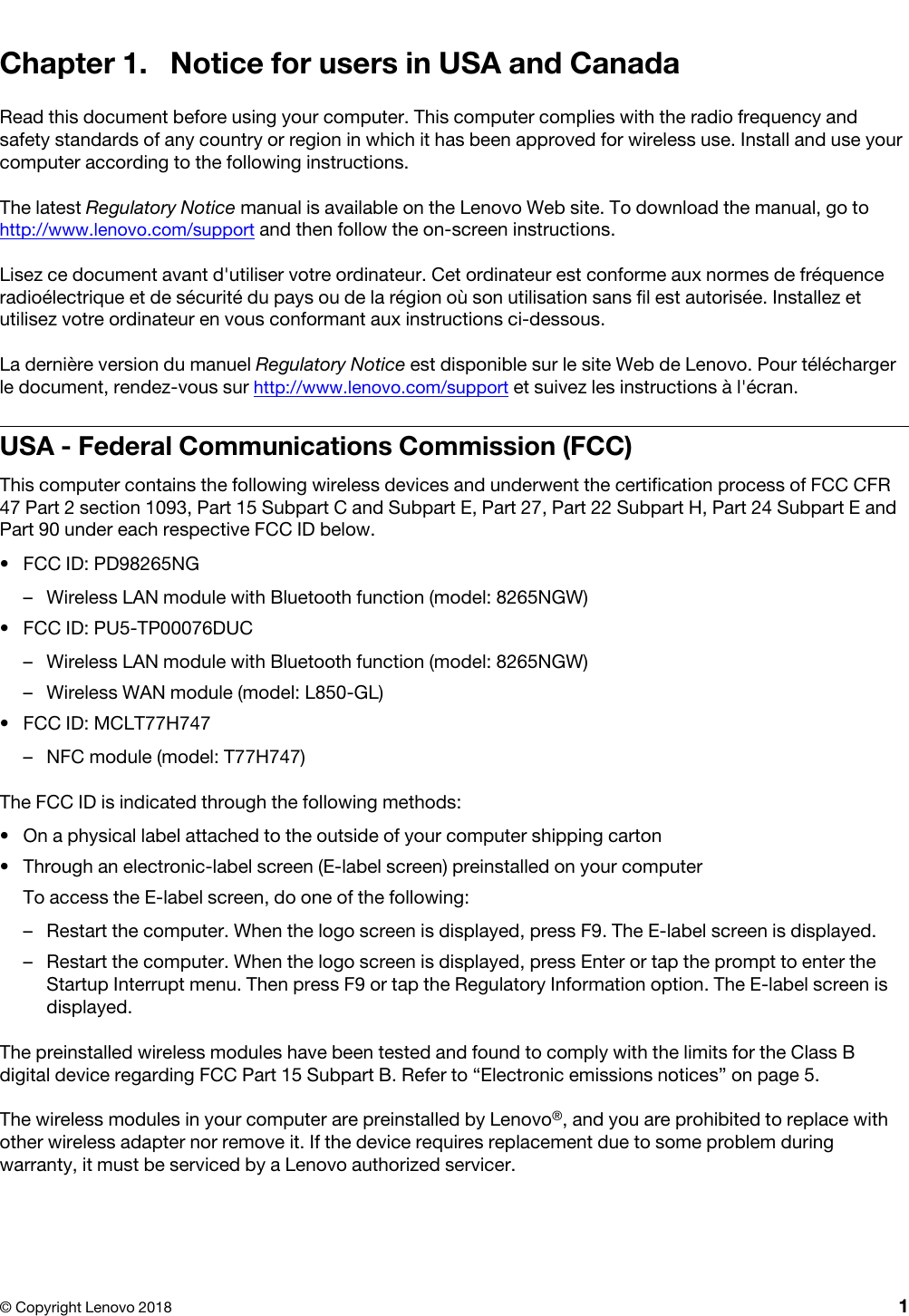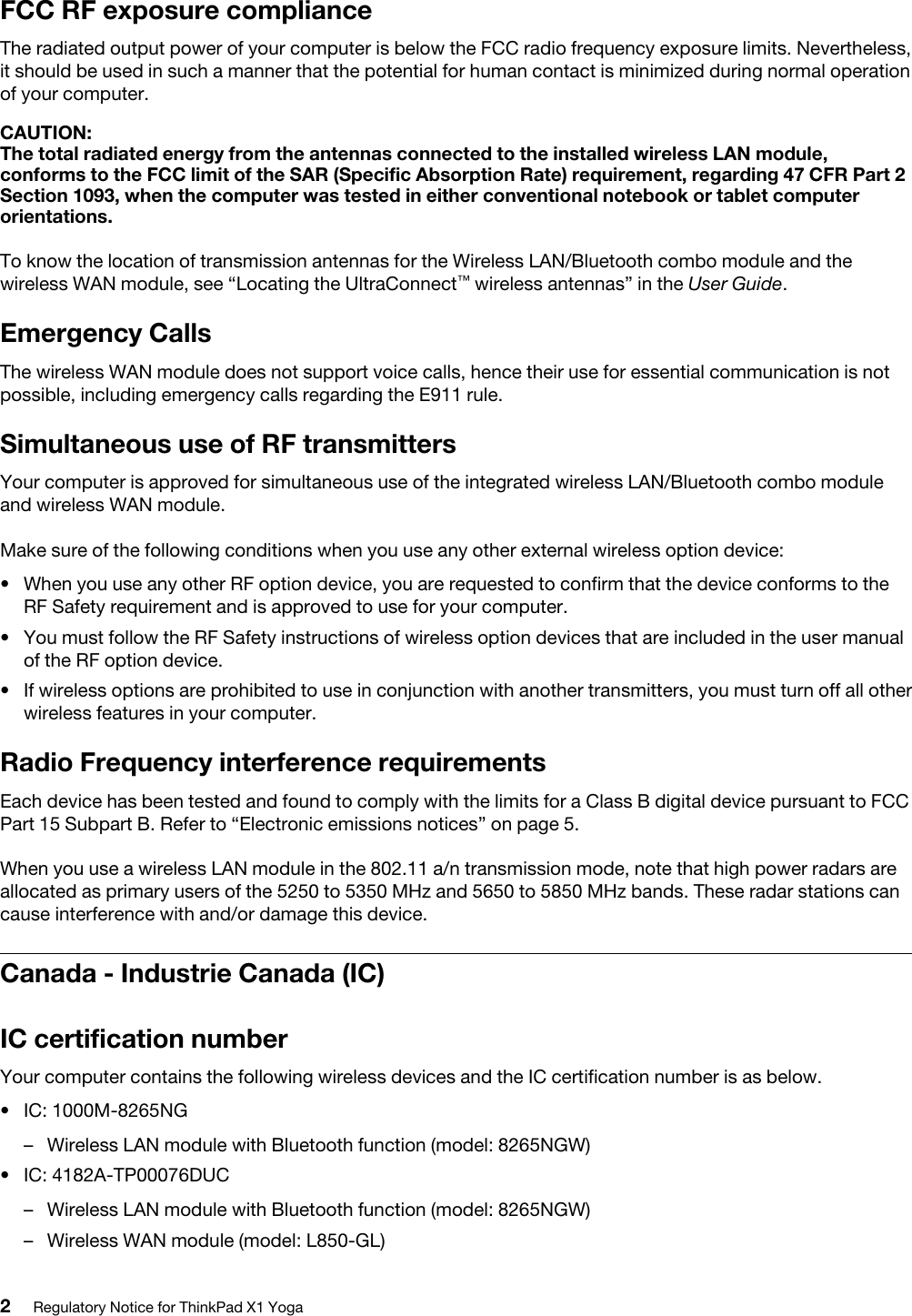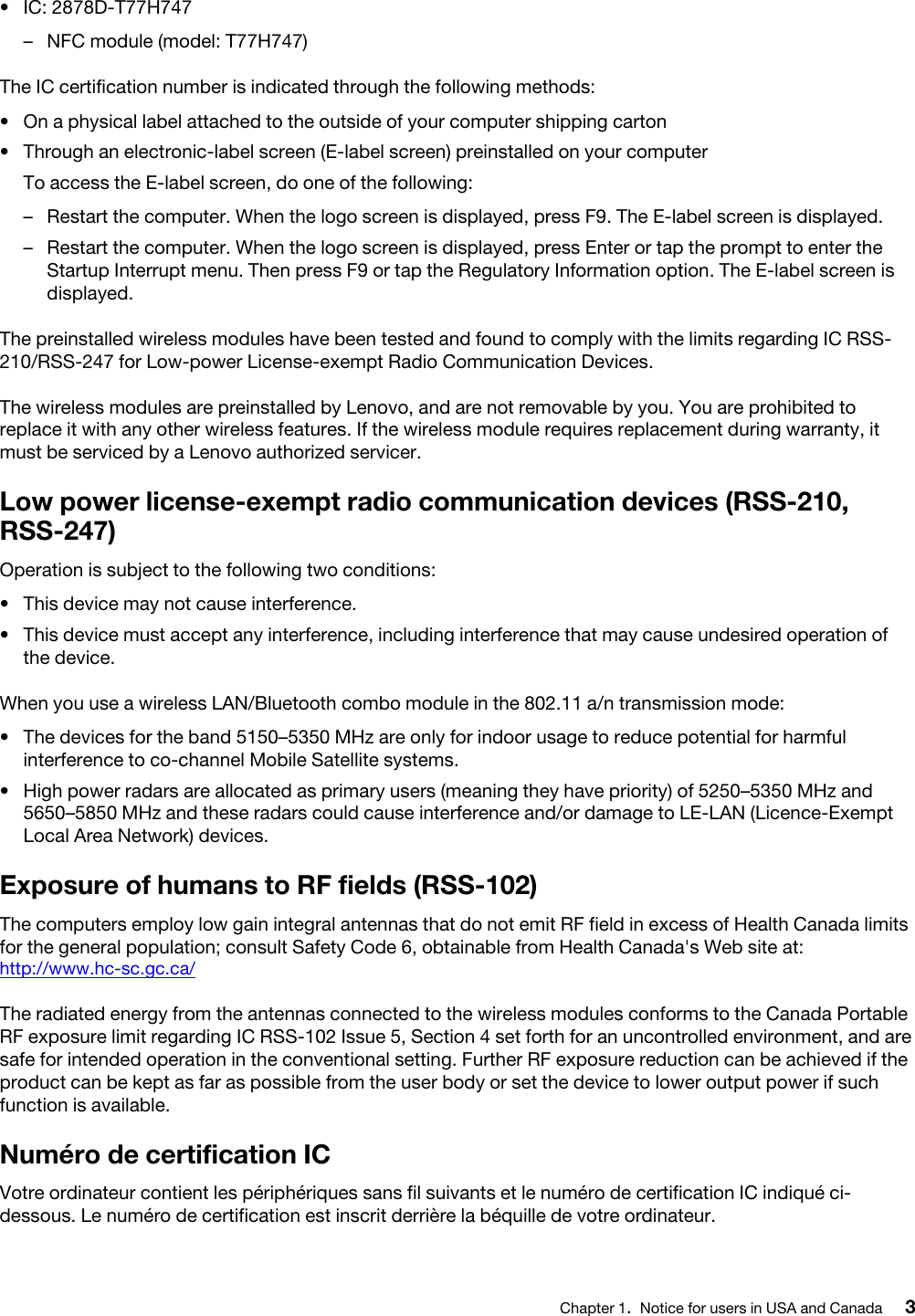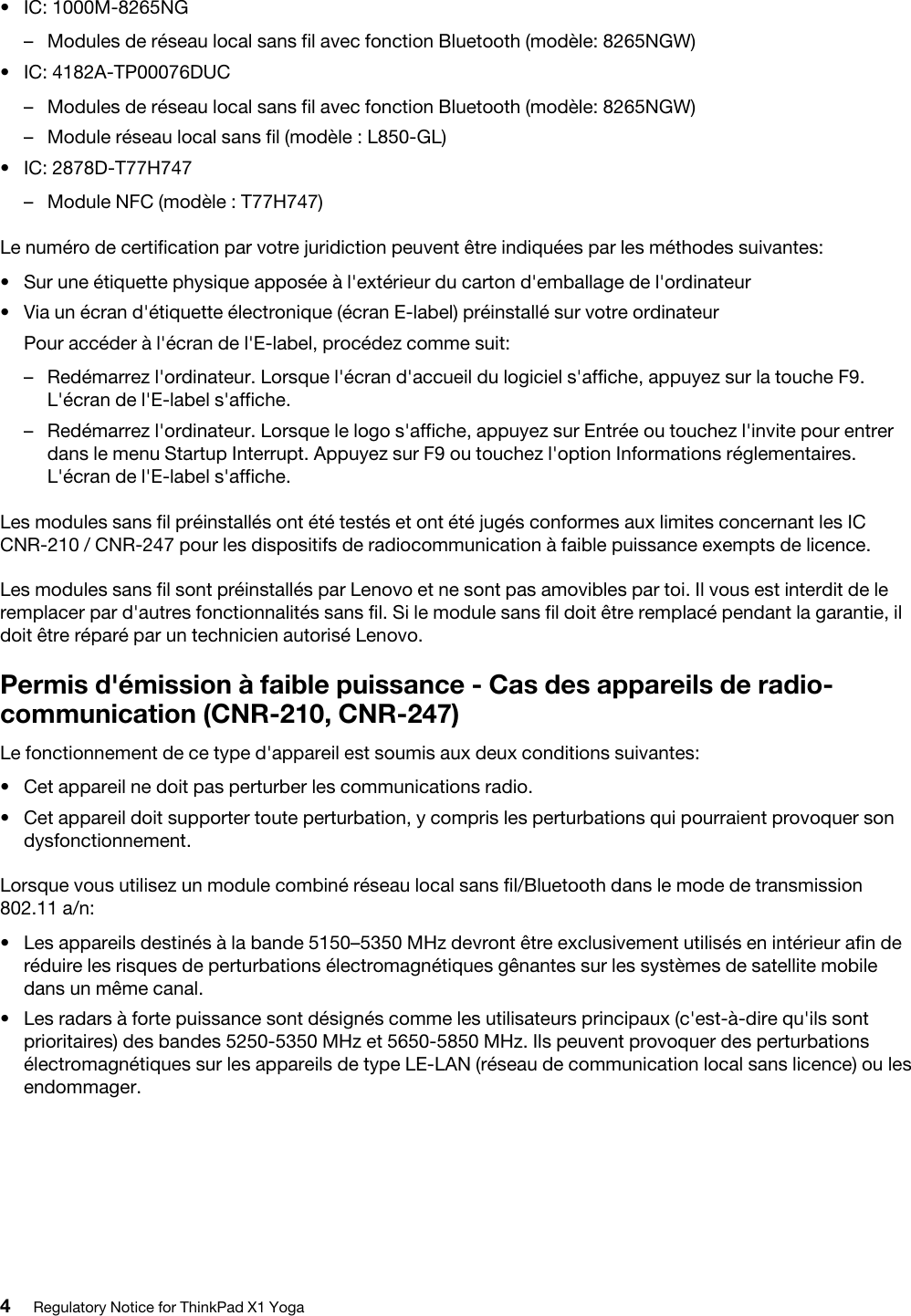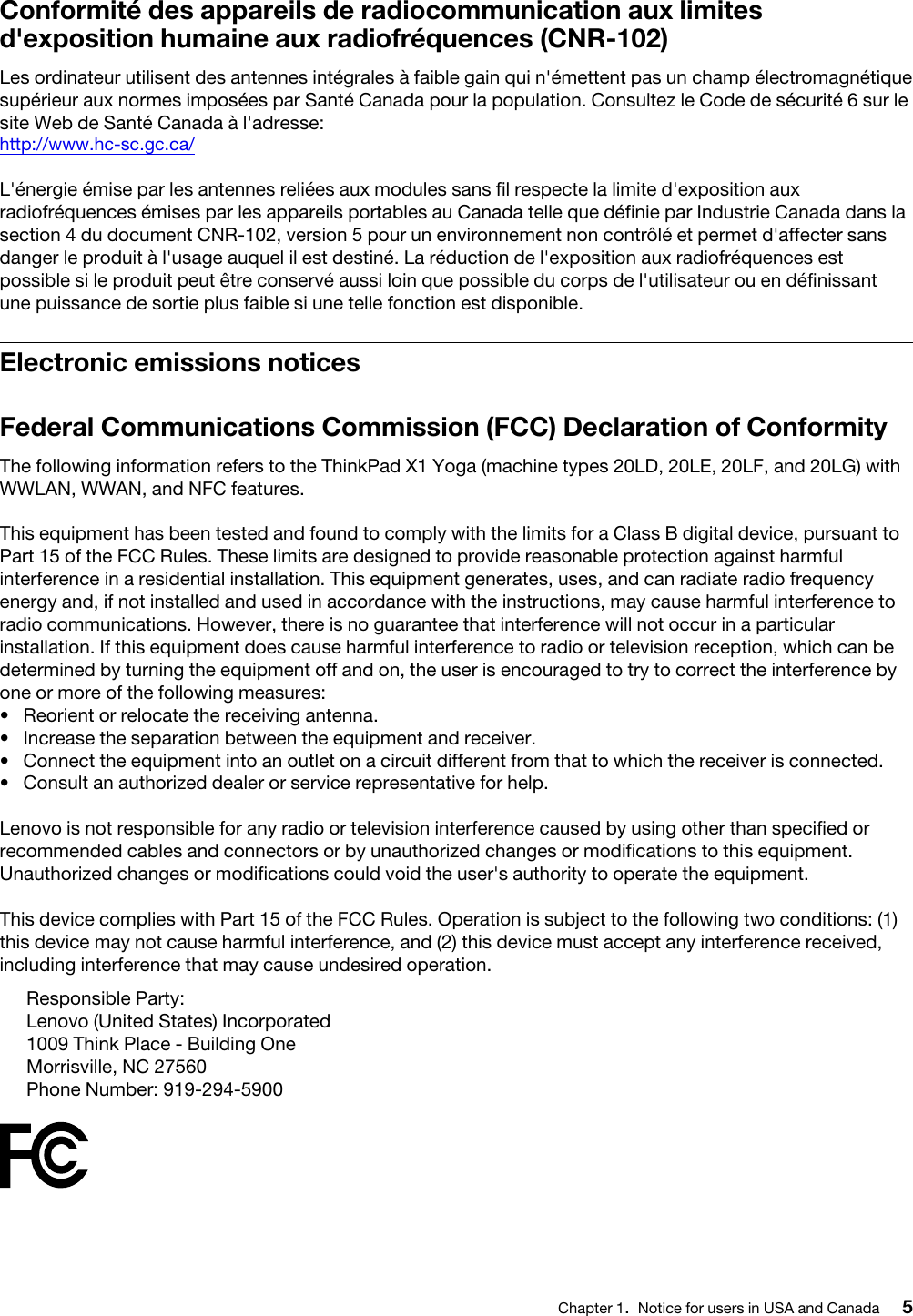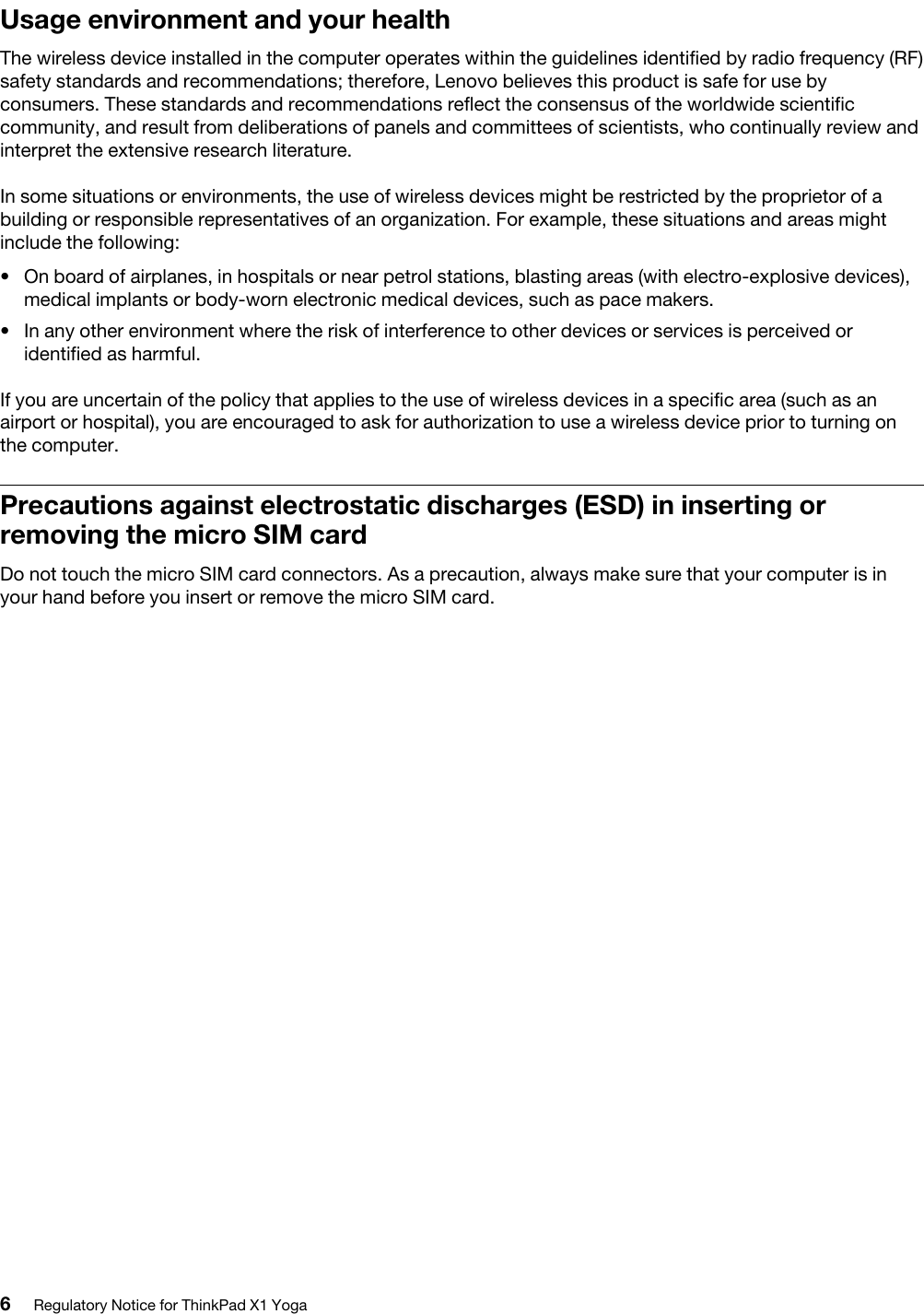Wistron TP00076DUC Notebook Computer User Manual Regulatory Notice for ThinkPad X1 Yoga
Wistron Corporation Notebook Computer Regulatory Notice for ThinkPad X1 Yoga
Wistron >
Contents
- 1. User Manual Regulatory
- 2. User Manual Setup Guide
- 3. User Manual User Guide-1
- 4. User Manual User Guide-2
User Manual Regulatory
